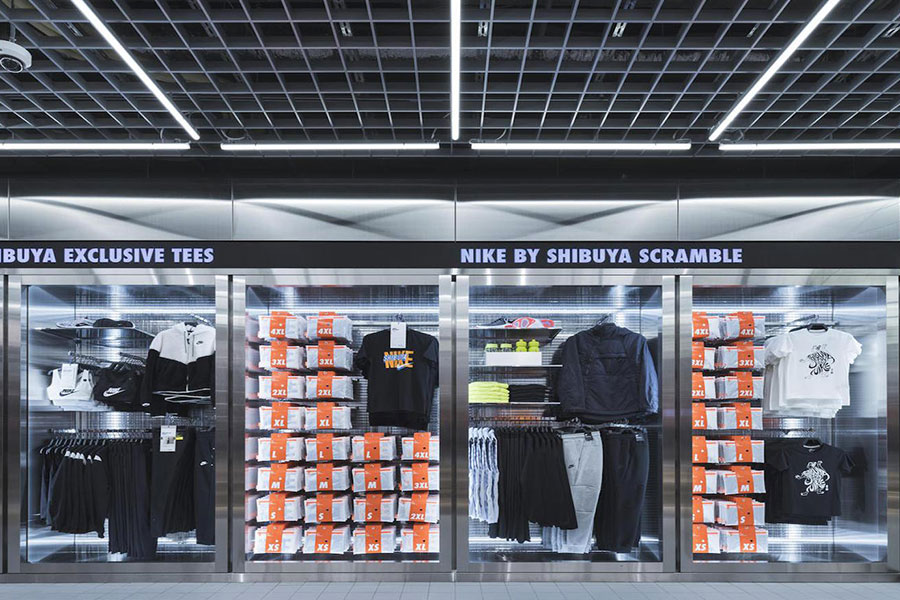Are small stores retail’s next big idea?
With flagships standing increasingly empty, brands are looking to marry the best of all worlds in digitally enabled, small-format stores that reflect their neighbourhoods.
For most of last year we tracked early signs that COVID-enforced rightsizing (and rightplacing) would see brands swap costly downtown temples for more nimble and more targeted retail touchpoints. ‘Those big, lavish, flagship stores are not relevant anymore. [Retailers need] small, little stores that are. . .like billboards in highly trafficked [areas], finite, geocharacteristic of the brand,’ fashion designer Cynthia Rowley told Forbes.
That was reconfirmed when Ikea announced that it was planning to open 50 more stores, most of which would be smaller, neighbourhood-adjacent units rather than its usual homeware hangars. ‘It’s never going to be that we go back to only opening big stores,’ explained Ikea’s chief executive of brand Jon Abrahamsson Ring at the time. ‘It will be a mix of formats, including smaller stores closer to where people live or work or move.’
 Ikea’s new Queens store features room sets designed to approximate the scale of NYC apartments. Photo: Courtesy of Ikea.
Ikea’s new Queens store features room sets designed to approximate the scale of NYC apartments. Photo: Courtesy of Ikea.
The recent opening of its 115,000-sq-ft space in Queens – the first ‘mini’ store in Ikea’s US portfolio – gives a clearer idea of the brand’s strategy. With room mockups shrunk to realistic New-York proportions, and a product mix based squarely on apartment living, Ikea is starting to lean far more on localization. ‘Every detail was created with the unique needs of New Yorkers in mind, from the proximity to public transportation and delivery and assembly options, to the wide product range curated specifically to meet their dynamic lifestyles,’ says Shahab Mollaei, Market Manager at Ikea Queens. Once they’ve bounced on enough futons, visitors can tap the digital checkouts dotted around the store to pay for accessories and order flat-rate home delivery for larger items. This use of a digital layer to speed throughput (and steer the stock. . .don’t doubt that searches from New Yorkers on the Ikea site won’t be ‘curating’ what’s on the shelves), coupled with upgraded fulfilment, is a key part of the downsizing playbook. In combination, they allow a size-limited space to impact well beyond its borders.
That’s certainly been central to the success of Nike’s micro-retail programme. During the company’s Q3 earnings call last year, CEO John Donahoe revealed it would start building 200 variations on the idea of ‘small-footprint, digitally enabled mono-brand stores’. These will take cues from the Nike Live store it first trialed in Melrose, California, which uses data from local users of the Nike app to constantly adapt its offer. The sports outfitter has just opened its latest Live concept in Eugene, Oregon. Titled Nike by Eugene, the emphasis is, again, about filtering the brand through the parameters of the immediate community. Visitors can get cues on local running routes, or meet up there as part of its running club. While there they can swipe their phone through one of Nike’s vending machines, which dole out free gifts to Plus members. If they’re offsite and looking for inspiration, they can text the store reps. As with all Live stores, the Eugene outpost materializes Nike’s e-commerce offer too, with customers able to take advantage of buy-online-pick-up-in-store services, as well as kerbside delivery.
 The vending machines in Nike Live stores, as in this example in Tokyo, let Plus members pick up free rewards. Photo: Courtesy of Nike
The vending machines in Nike Live stores, as in this example in Tokyo, let Plus members pick up free rewards. Photo: Courtesy of Nike
That ability to combine technology and delivery to approximate some of the benefits of a larger store is something that outerwear brand Norwegian Rain has also taken advantage of as they explore smaller-form factors. Its 20-sq-m Copenhagen ‘Compact Store’ features just six styles, split between men, women and unisex. Liberal use of QR codes – 2020’s surprise technological winner – help the label seamlessly jump between a boutique retail footprint and a larger digital storefront that handles the heavy lifting around brand narrative and customization. ‘The idea was to bring together breaking brick-and-mortar, and the digital world, in the same kind of concept,’ cofounder Michael T. Nartey told Women’s Wear Daily. ‘The most important thing was getting people to understand the brand, try the clothes on, and get the fit right in the shortest possible time.’
Source: FRAME




